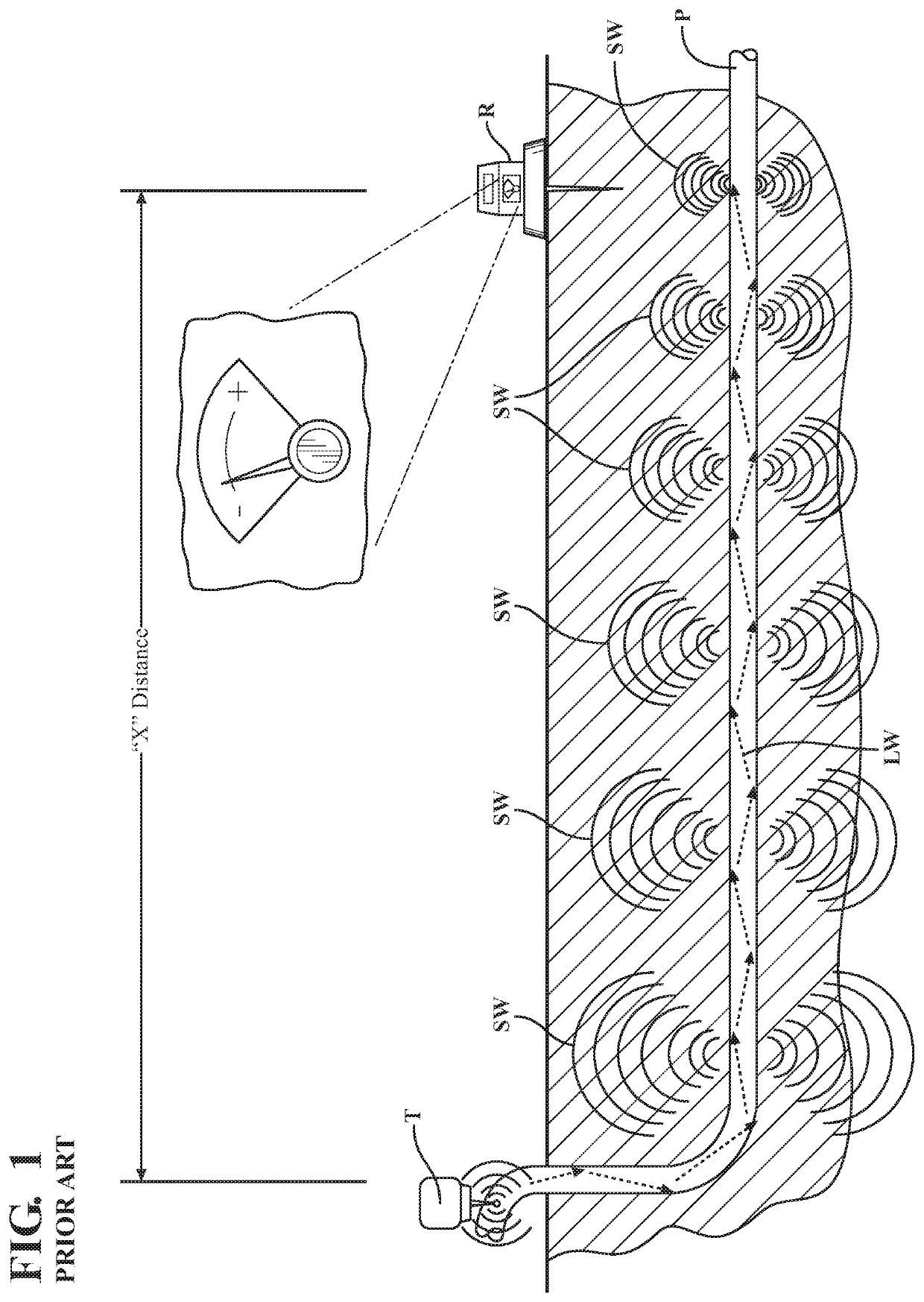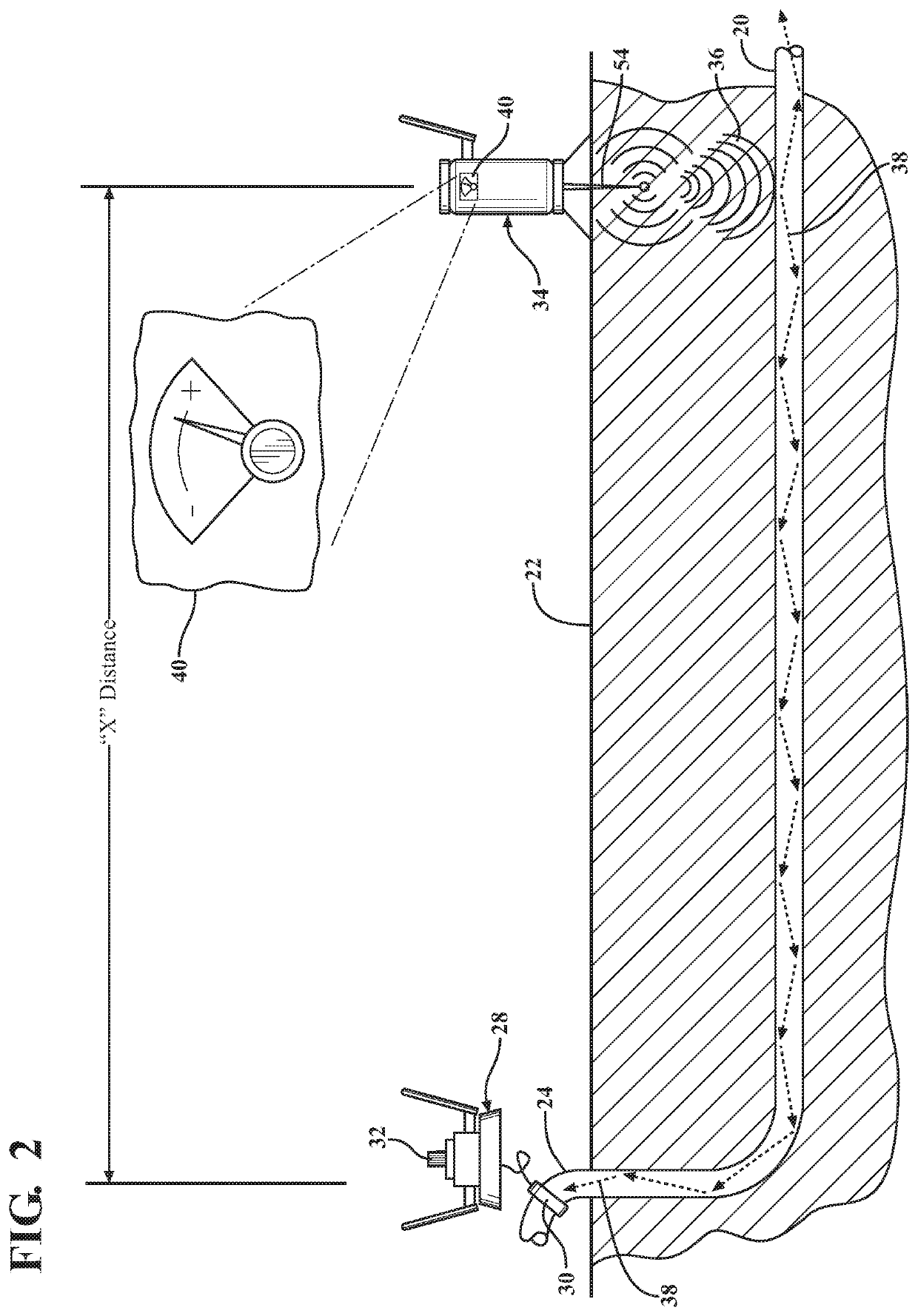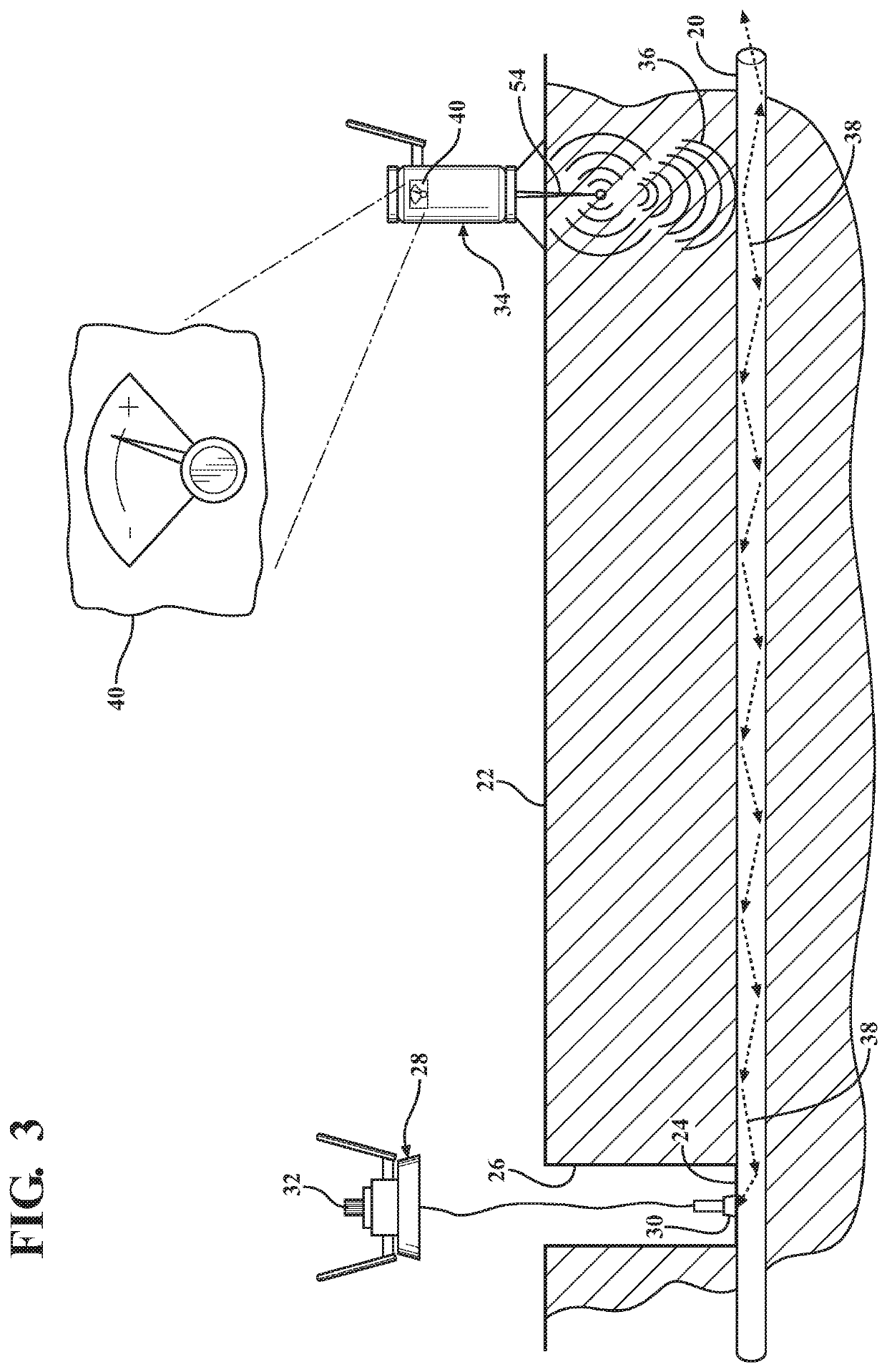Non-metallic pipe locator
a non-metallic, locator technology, applied in direction finders using ultrasonic/sonic/infrasonic waves, instruments, etc., can solve the problems of non-metallic pipes, clay or concrete and plastic pipes, like the earlier clay and concrete pipes, not locatable by traditional electromagnetic means. achieve the effect of reliable, repeatability and convenient us
- Summary
- Abstract
- Description
- Claims
- Application Information
AI Technical Summary
Benefits of technology
Problems solved by technology
Method used
Image
Examples
Embodiment Construction
[0032]Referring to the figures, wherein like numerals indicate like or corresponding parts throughout the several views, the invention is shown in various alternative configurations implementing a novel system and a non-invasive method for locating a remote section of a pipe 20 buried in the earth 22. Based on several data points collected through empirical samplings, a skilled operator can accurately predict the location and path of an underground buried pipe 20 without exposing the pipe's contents to external contamination. The principles of this invention can be applied to locate pipes 20 of all types and compositions, including but not limited to gas pipes, water pipes, sewer pipes, drain pipes, pipes under pressure and not under pressure, pipes made of PVC (and other formulations of plastic), clay, concrete (including but not limited to asbestos concrete, PCCP, and the like), cast iron, steel, copper, aluminum, and other metals. In the most common implementations, the invention...
PUM
| Property | Measurement | Unit |
|---|---|---|
| frequency | aaaaa | aaaaa |
| frequency | aaaaa | aaaaa |
| distance | aaaaa | aaaaa |
Abstract
Description
Claims
Application Information
 Login to View More
Login to View More - R&D
- Intellectual Property
- Life Sciences
- Materials
- Tech Scout
- Unparalleled Data Quality
- Higher Quality Content
- 60% Fewer Hallucinations
Browse by: Latest US Patents, China's latest patents, Technical Efficacy Thesaurus, Application Domain, Technology Topic, Popular Technical Reports.
© 2025 PatSnap. All rights reserved.Legal|Privacy policy|Modern Slavery Act Transparency Statement|Sitemap|About US| Contact US: help@patsnap.com



